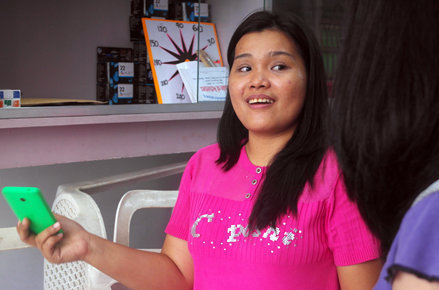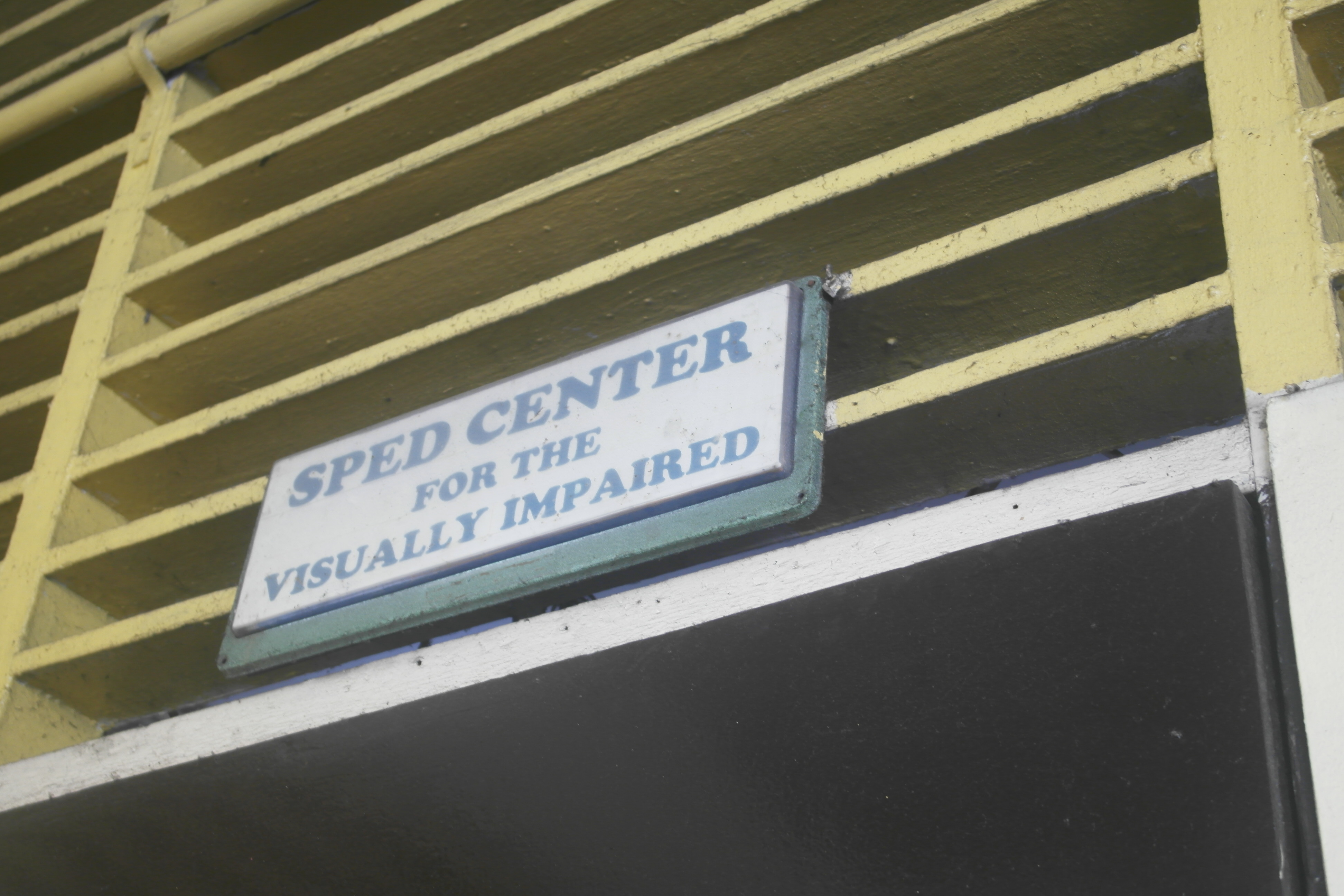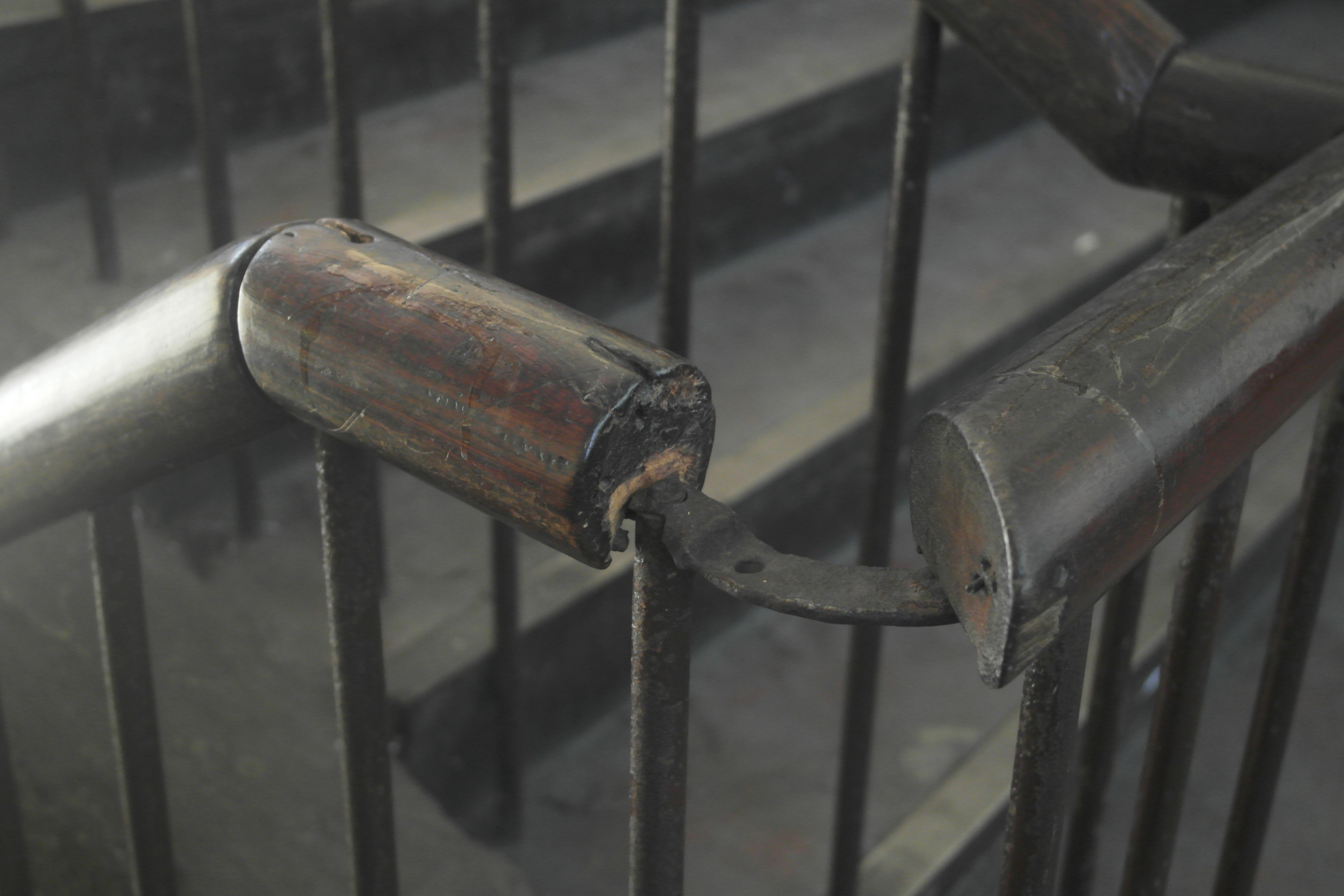![rmhs]()
Text and photos by MARIA FEONA IMPERIAL and YVETTE B. MORALES
WHEN she walked into her first day of teaching back in 2007, Leah Reyes was rendered speechless. It was not because all eyes were on her as the new substitute teacher. Rather, not all of the students in the classroom could see.
Reyes had been assigned to teach mathematics at the Ramon Magsaysay High School Manila (RMHS), which integrates students with disabilities in regular classes where most students have none. Fresh from college, she had not been trained to teach highly visual subjects like geometry and trigonometry to students who are blind or with low vision.
“I did not know anything,”she said.
“I thought the letter ‘A’was written as is. Turns out, there is only one dot,”she added, recalling her struggle in comprehending Braille handwritings.
To adapt to her new job, one of her first adjustments was relying on senses other than sight to get her lessons across.
“I just made my voice loud enough as I read what was written on the board,”she said.
![SPED teacher Leah Reyes]()
SPED teacher Leah Reyes
In eight years, Reyes, now 29, would become a multi-awarded special education (SPED) implementer, fulfilling her “calling”on that day in 2007.
But those years were filled with more demanding adjustments. To accommodate the needs of her students, she had had to improvise teaching materials on her own, sometimes using her personal funds because of limited resources from the school.
She would have to do more of the same as another school year begins. Her story, and more broadly the sad state of special education in RMHS, carries special significance for all students with disabilities in the country.
The nation’s capital Manila has only three high schools for SPED learners. RMHS, which last school year had 49 students with special needs, is the biggest of the three.
‘If there are five of them, then you have to make five distinct copies’
Educational and assistive materials for students with disabilities are adequately funded, according to the Department of Education (DepEd).
The department funds, for example, the publishing house of nonprofit Resources for the Blind (RBI), said Arsenio Manalo, Quality Assurance Division supervisor of DepEd National Capital Region (NCR).
RBI gives free Braille books upon the request of schools, he said.
Yet when Reyes first started teaching, she was able to work with only a few available teaching materials for her students with disabilities.
Every school day afternoon, her students would visit her at the SPED resource room for a follow-up session. These sessions are designed so students would further understand what was taught in class. From their questions, Reyes was to create instructional materials to clarify lessons that were still unclear.
“If there are five of them, then you have to make five distinct copies,”she said. RMHS had 15 students with visual disabilities last school year. Sharing of materials was not possible because students who are blind and those with low vision have different needs. Modifications in color and font sizes might thus be required.
Resourcefulness, Reyes said, was often her only option. She improvised a thermometer, converters, trigonometry guides and even the periodic table of elements in Braille.
Using corrugated scrapbook materials, textured recycled items and cheap supplies from Divisoria, she also came up with her own geometric models in neon color, as well as illustrations of the parts of flower, plant and animal cells.
These adjustments, she said, were necessary in giving life to a SPED resource room that had not updated its equipment in years.
All Reyes had when she took the post of SPED teacher in RMHS were Braillers, a Braille printer, and old Braille books and teaching manuals. These were acquired during the time of her predecessor, Evelyn Caja.
Caja was a tough act to follow. She had been with the school’s SPED program since 1984. Further, her numerous awards had led to her elevation in DepEd’s SPED Hall of Fame.
But Caja saw Reyes’potential and her keenness in handling students with visual disabilities. Before teachers can transfer to SPED, they have to earn at least 18 units of special education courses or pursue a master’s degree and complete a required number of hours of training.
It was Caja herself when she was about to retire, along with former RMHS principal Cristina Reyes, who encouraged Reyes to pursue higher studies. She is now halfway through her master’s in SPED at the Far Eastern University.
The combined efforts of Reyes and the now-retired Caja provide signs of hope for inclusive education in the country. Still, their efforts are not enough if other teachers are not willing to make adjustments in mainstreaming students with disabilities.
‘Usually, we are not allowed to join’
Sisters Czarinah and Camille Mercado, alumnae of RMHS, both have visual disabilities. Both also experienced exclusion and discrimination during their high school years.
Czarinah, who graduated in 2011, said she was discouraged by a teacher to take the qualifying exam for the special science program. This, despite satisfying the grade requirements when she enrolled in 2007.
The special science program entails additional Math and Science subjects in compliance with the Engineering and Science Education Program (ESEP) of DepEd. It is usually undertaken by students from the top two sections.
Only one blind student managed to graduate under the special science class: Roselle Ambubuyog, who was RMHS class valedictorian in 1997. Ambubuyog later graduated summa cum laude in Mathematics, minor in Actuarial Science at the Ateneo de Manila University in 2001.
“I heard (the teachers) had to go through the needle’s eye in order to maintain (Ambubuyog) in the special section,”Czarinah said.
But for Arsenio Manalo of DepEd, RMHS cannot be blamed for discouraging students to take the special science examinations. The school might not be ready to meet the needs of a students with disabilities should they pass the qualifying exam, he said.
“It would be hard for the school to hire an additional teacher if there’s only one (SPED student in the program),”he said.
But admission to the special science program was not the only challenge Czarinah, and later her younger sister, Camille, had to deal with.
Throughout their four years in RMHS, they had teachers exclude them from participating in regular class activities.
In science classes, for instance, they often remained in their seats because teachers did not allow them to join even in the most basic experiments.
“When they use fire (in experiments), usually we are not allowed to join,”said Camille, who graduated in 2014.
Given the chance, the sisters said they would have wanted to participate.
“We have nothing to lose. Except when the experiment includes chemicals, which are dangerous,”Czarinah said.
When they were not allowed to perform class experiments, they listened carefully to the teacher’s explanation to visualize what their classmates were doing. But Camille said a hands-on experience would have been much preferred.
“It depends on the teacher. You’ll end up sitting through activities if the teachers already judged or labeled you,”Czarinah said.
Discrimination extended beyond academics.
Czarinah recalled how she was barred from doing the one thing she always wanted to do: sing.
“I auditioned for the choir. I wasn’t accepted. They said the need for some choreography might give me a hard time,”she said.
Her rejection led the younger students to form a group of their own, the RMHS Violin Ensemble, composed of a violinist and the SPED choir.
According to DepEd, responsibility rests on the teacher in such instances of discrimination.
“What we need is to know the issues and the root cause why the teachers are not allowing the students (to participate) in those kinds of activities,”said Manalo.
He added that when such things happen, both the concerned teacher and the principal would have to undergo a task and skills analysis training.
Participation of SPED learners in extracurricular activities such as arts and crafts, quiz bees, chorale reading and interpretation is concrete proof of the dedication of teachers to transform the skills and abilities of their students, Manalo said.
But it’s not just the teachers, he said, as some parents might also be discouraging their children from participating in school activities.
Czarina and Camille both lament the unfair treatment they have experienced in school.
“Some (teachers) could not accept that sometimes, students with disabilities perform better than those who are sighted and without disability,”Czarinah said.
Still, the sisters take comfort in remembering the many times they were treated fairly. In Physical Education classes for example, they were made to do curl-ups and push-ups. They were also reprimanded whenever they failed to bring uniforms.
All in all, more teachers allowed them to fully participate in class activities than those who did not, Camille said.
Government institutions are the No. 1 violators of Accessibility Law
Discrimination is not the only challenge students with disabilities face at RMHS. The inaccessible environment also poses dangers to their physical safety.
Because the school has adopted a “mainstreamed,”that is, integrated setup, students with visual disabilities also have to transfer rooms and sometimes even floors to get to their next classes.
They are usually guided by sighted students through the school corridors, but not all remember to help.
“One time, our classmates did not fetch us. But since I was familiar with the location of the next classroom, I tried to go there on my own,”Czarinah said.
To accommodate its more than 6,100 students, RMHS observes multiple shifts in class schedules.
Afternoons are busiest, when everyone is already in. The school grounds and lobbies become overcrowded. When the bell rings, students rush to get to their next classes, often aggressively pushing one another so they can pass through.
“One time along the corridors, a student bumped into me and even cursed me. I wasn’t sure if he knew I was blind,”Camille said.
But despite the risks in this setup, the sisters still want to be allowed to be independent. Overprotective teachers have hindered them from doing even the simplest things, they said.
They remember, for example, being assisted immediately back to their rooms when seen walking around the campus unaccompanied by sighted classmates.
An official at the National Council on Disability Affairs (NCDA) agreed with their sentiment. Being inclusive, said Bing Baquir of NCDA Sub-Committee on Built Environment, is not only about mainstreaming students to regular sections.
“When you say full inclusion, it means the student should also be independent,”she said.
![RMHS SPEd center for visually impaired]() This is easier said than done at RMHS, where even the most basic facilities such as handrails, which are supposed to guide students through corridors on their own, are rendered unusable because they are broken or dirty.
This is easier said than done at RMHS, where even the most basic facilities such as handrails, which are supposed to guide students through corridors on their own, are rendered unusable because they are broken or dirty.
![Broken, dirty handrail]() Some handrails have lost their wooden covering so she would rather not hold on to them anymore, Camille said.
Some handrails have lost their wooden covering so she would rather not hold on to them anymore, Camille said.
Perhaps most ironic is the SPED resource room itself, which is on the second floor of an RMHS building. It would remain there in the near future because students had already gotten used to its location.
Manalo said one other consideration for keeping the room in the second floor is the school’s susceptibility to flooding. Situated along Espana Boulevard, the surroundings of RMHS are easily flooded even during light to moderate rains.
But the law is very clear on accessibility requirements for persons with disabilities (PWDs).
Republic Act 7277, or the Magna Carta for Persons with Disabilities, requires government institutions to comply with reasonable accommodation of those with disabilities. This includes proper modification of facilities and equipment.
Batas Pambansa 344 or the Accessibility Law, meanwhile, requires schools to install barrier-free facilities and features such as stairs, walkways, doors and entrance, washrooms and toilets, handrails, parking areas, floor finishes, ramps and seating accommodations, among others.
Clearly, RMHS fails to meet the standards set by these laws. And it is not alone in this regard.
Government offices and institutions, instead of being models of accessibility, are even the top violators of BP 344, said Baquir of the NCDA.
“Despite all the information dissemination (and) the advocacy, people are still unaware of what BP 344 is and why it is needed,”she said.
But oversight is not an acceptable reason for the noncompliance with the law, Baquir said.
“That excuse has already been used a lot of times. If you go through the law, can you still say you have ‘overlooked’ it?” she said. “Unless we change our mindset and take PWDs into consideration, nothing will happen because they will always be left out.”
Accessibility features can even be installed through the use of indigenous materials, she said. For example, in NCDA’s non-handicapping environment project in New Lucena, Iloilo, coco lumber was used for ramps and bamboo for handrails.
More than a year ago, RMHS made an attempt at providing accessible facilities through the installation of a ramp, low door knobs and wide corridors in the school’s new building, which was intended for the Home Economics department. Yet the old accessibility challenges remain.
As another school year begins, the job of adjusting and accommodating students with disabilities again falls squarely on the shoulders of teachers like Reyes. And in the absence of accessible facilities, she is not the only one doing the adjusting.
“We also teach the students to adjust,”she said, “because we cannot always provide the best for them.”
(The authors are journalism majors of the University of the Philippines-Diliman. They submitted this story for the journalism seminar class “Reporting on Persons with Disabilities” under VERA Files trustee Yvonne T. Chua.)

















































































